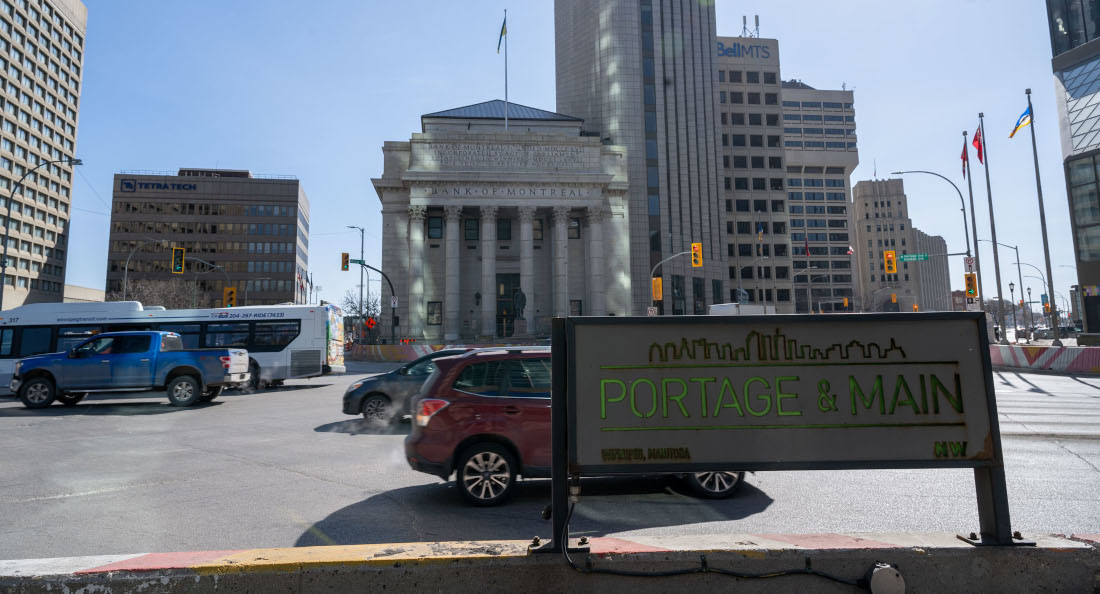Council votes to open Portage and Main
Nearly 40-year debate settled, repairs deemed too expensive
The City of Winnipeg council members have voted in favour of reopening Portage Avenue and Main Street for pedestrians.
Three members were against the decision, while 11 voted in favour. Now, the intersection is expected to be opened as of July 1, 2025, after more than four decades of it being barricaded against foot traffic.
The decision comes after a report showed it would cost $73 million to repair the underground system beneath Portage and Main and cause four to five years of construction-related delays.
Repairs would have to include replacing leaking waterproof membrane under the concrete in the concourse and involve digging up parts of Portage and Main.
“Tearing Portage and Main apart would create traffic chaos for nearly half a decade,” Mayor Scott Gillingham said in a press release issued at the beginning of March. “Then we’d need to do it all over again in 30 to 40 years. I don’t think that’s the right choice for commuters, taxpayers or downtown residents.”
The intersection was closed to pedestrians in 1979. Although there are various reasons for the move, a major one was to drive foot traffic down into the concourse to help businesses that were struggling at the time.
Winnipeg is unique among other cities in not allowing pedestrians to cross a large intersection, University of Winnipeg history professor Janis Thiessen says.
“Most of the major cities in the world have their intersections downtown open to (foot) traffic,” Thiessen says. “Vancouver doesn’t have major intersections closed off to pedestrian traffic, and they seem to manage quite alright.”
In Winnipeg, an average of 12 pedestrians are killed and 160 injured each year, according to Manitoba Public Insurance data from 2019. Roughly half of those deaths take place at an intersection, while one in 10 happen between intersections or while walking on roads.
She says the closure of the underground walkway will likely impact businesses that have already struggled because of the COVID-19 pandemic. But with new housing complexes, like the 300 Main apartment block, more people are living downtown now than 50 years ago.
Currently, the underground area is not open 24 hours a day and is also physically inaccessible.
Thiessen says people with mobility concerns may have a hard time using the underground system, especially since elevators and escalators at the entrances are often broken.
Much debate around the intersection opening surrounds the safety of pedestrians trying to cross.
Thiessen thinks the main factor in opening it up is money.
“People hate change, and people hate spending tax money,” she says. “That’s the only reason that this has shifted now. (Repairs are) going to cost more than to simply open up Portage and Main.”
Gillingham said the intersection is a “critical connection point” for the New Transit Master Plan.
The plan was approved in 2021 and proposes broad visions of Winnipeg Transit for the next 25 years and more specific goals for the next five years. The project includes enhancing ridership and riders’ experience, reducing traffic congestion downtown and increasing access to essential services like healthcare by expanding services.
“It’s time to deal with Portage and Main once and for all and move on to more important issues like improving traffic flow throughout the rest of the city, redesigning our new transit network and investing in new recreation facilities,” Gillingham said in the press release.
“It’s just an intersection.”
Published in Volume 78, Number 23 of The Uniter (March 28, 2024)








